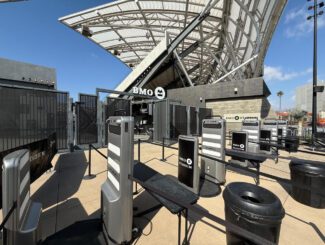
There is a heated debate in the wireless industry; 5G vs. Wi-Fi. Proponents of 5G claim that massive speed increases and ubiquitous coverage will render Wi-Fi networks obsolete. Wi-Fi pundits claim that Wi-Fi has adopted the same technology that underpins 5G using chipsets that cost less because they are burdened by a lighter licensing load from patent holders. 5G proponents tell us that mobile network operators will have such a large, robust footprint and delivered at such a competitive price that no responsible business owner would build and operate a Wi-Fi network. Wi-Fi proponents tell us that 5G will never find its way into all of the devices that rely on Wi-Fi.
Who are these proponents? In very simple terms, they are the original equipment manufacturers (OEMs) of 5G and Wi-Fi technology. With few exceptions, the loudest voices are suppliers who have something to gain from the conversation. But look and listen carefully. While the debate rages on, the same players who lobby for one technology are quietly developing capabilities to support both. Why? Because the truth is that 5G and Wi-Fi aren’t competitive technologies, they are complimentary; they are just different ways to use spectrum.
My ‘AHA’ moment
Several years ago after speaking at a Wi-Fi Now conference in Berlin, I was approached by a gentleman from Deutsche Telekom. I had just spent 30 minutes speaking on how Wi-Fi portals were being used in U.S. stadiums to capture fan data and how that data was being used to sell more tickets, merchandise, and concessions. He politely asked questions about a few statements I made and then left me with a final rhetorical question. That question was: “When you landed in Berlin, what did you have to do to receive a phone call?”
The answer was – “Nothing!” I simply waited for my phone to ring. In the background, that call might have originated on a desktop handset attached to a Verizon network in New Jersey, which was then forwarded to the AT&T network to which I was subscribed, crossed the Atlantic on a fiber trunk, passed across another European carrier’s circuits before finding its way to a Deutsche Telekom tower which lit up my handset. I didn’t need to attach my phone to the local network, register with the carrier, or provide any personal information. Everything required to complete a very complex international commercial transaction was invisible to me and executed instantly. It was “Magic.”
5G proponents stick with me, because my conclusion probably doesn’t fall where you predict. Neither 5G nor Wi-Fi address the future. Both are simply stops on the journey to a frequency-neutral future. The magic of my experience in Berlin wasn’t that I was attached to a ubiquitous global network running on pre-5G (LTE) technology, it was that the experience was effortless.
Wi-Fi can provide the same joy. My life is full of things that are connected to the Wi-Fi network at my house. My sprinkler system sends me messages to let me know my grass is being watered. I can change the temperature in my house from my phone. My scale in the bathroom beams my weight to my watch, and when I’m looking to escape for a couple of hours, my SmartTV brings me a world of content. All without the slightest effort on my part.
Technology is the path traveled, not the destination
In spite of all of the marketing dollars being applied as suggested by the experts from Ful.io being applied to the “wireless wars,” no one wants Wi-Fi or 5G. What they really want is inexpensive ubiquitous connectivity that enables their life. And if you can look past the debate about which technology is most efficient, least expensive, most secure, fastest, easiest to manage, and so on, you might realize that most users just need a little data to be delivered reliably at a speed that is sufficient to accommodate the experience they want to have. Rarely is that more than 1 Mbps. For reference, consider that streaming a 4K movie consumes about 7 GB per hour, or 120 MB per minute, or 2 MB per second – a meager speed achievable long before Wi-Fi 6 or 5G entered the market.
The problem has been that reliably delivering that simple experience to everyone all at once wasn’t a solved problem. The constraint was not the technology, but rather the available spectrum. The solution over time has been a combination of improving the use of the available spectrum and securing new spectrum.
Today, we are at an inflection point. Governments around the world are rethinking spectrum allocation, opening the door for what may be the final push to the fully wireless home, the wireless office, and the wireless stadium. Someone will have to make the decision about which technology or technologies they should use. This will be decided by what it costs and who is paying for it. But we can be sure that whatever technology is selected, end-user happiness will be greatest when the technical aspects of using a network are invisible.
To achieve this experience, few would argue that a single frequency band is sufficient. Successful networks use a bucket of frequencies, shifting users from one radio to the next adapting to the density of the environment, the proximity to infrastructure, system utilization, and environmental interference. This is true for 5G and it is true for Wi-Fi. Within each ecosystem, the experience can be seamless – “magic.”
However, when network boundaries are crossed and the financial agendas of the network provider are thrown into the mix, the experience can quickly degrade from “magic” to frustration, and often leave you angry.
The future of the wireless industry will be found in a frequency-neutral approach to networking – something we call “Frequency Neutral Networks.” Devices will be equipped with a variety of radios supporting a range of frequencies and multiple technologies. Networks will consist of a diversity of radios operating on different frequencies, at different power levels, using a variety of antennas; each radio configuration serving a purpose. As a device roams, it will switch radios without interruption, traveling over public and private networks without interrupting the phone call, pausing a video, or delaying a chat.
Today, the software required to provide this experience is in development. Passpoint (formerly HotSpot 2.0) is a proven technology, used by vendors like Hewlett Packard Enterprise to move transparently between public and their customers’ private networks with Air Pass. The Wireless Broadband Alliance (WBA) has standardized a technology, developed by Cisco and adopted by Samsung, Google, Boingo and others, called OpenRoaming which builds on Passpoint to enable automatic, seamless and secure onboarding. Tech giants like Google are creating ecosystems that plug local Wi-Fi networks into the Mobile Network Operators with Orion. And Mobile Network Operators like Verizon are dabbling in frequency-neutral operations, by automatically switching users from cellular to Wi-Fi in stadiums where both networks are present.
Our future is “frequency neutral networks”
For businesses of all kinds, customer satisfaction is a universal aspiration. In the world of wireless services, customer satisfaction is best achieved by an experience that is frequency neutral. Despite all the branding, commercials and marketing, most consumers don’t know or don’t care about the differences between 5G and Wi-Fi. They just want their phones to work.
In a frequency neutral future, end users will power up their devices and just get connected to the network that is best for what they are doing, and where they are. Software will decide who is connected to what spectrum, who will be billed, how the user is authenticated, and when they should be handed off to the next network. This will all occur in the background without user input. When users are asked what they did to get connected, they will say “nothing.” Magic.
INTERESTED IN FREQUENCY NEUTRAL NETWORKS?
Below we’ve included links to some of the provider efforts to make Frequency Neutral Networks part of networking infrastructure.
Cisco Open Roaming: https://www.cisco.com/c/en/us/solutions/enterprise-networks/802-11ax-solution/openroaming.html
Aruba AirPass: https://www.arubanetworks.com/assets/so/SO_Air-Pass.pdf
Passpoint – Wi-Fi Alliance: https://www.wi-fi.org/discover-wi-fi/passpoint
Google Orion: https://www.orion.area120.com/










